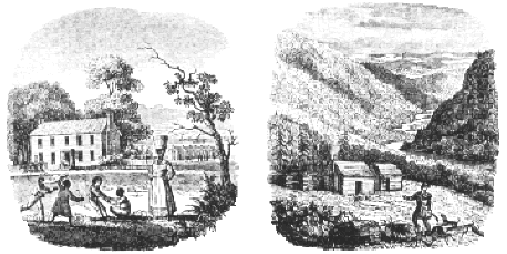|
|
|
James' Childhood |
Throughout
the colonial period, Virginia constantly grew. From the precarious
foothold at Jamestown in 1607, the population at first expanded
slowly. By it had grown to several thousand, but the people were
scattered from the headwaters of the James River to the far reaches of
the Eastern Shore. In order to establish court jurisdictions, the
colony was divided into seven shires, later called counties. As they
became more densely settled, they were divided to form more counties.
By 1760, there were 47 counties. Although they covered about half the
present day state, the great bulk of the colonists still lived near
the great rivers to the east.
Halifax was then
Virginia's most western county - it was the frontier. It was formed from
Lunenburg County in 1752. Settlers from Pennsylvania and Maryland were
migrating south seeking cheap land. They came bringing all they owned.
The prosperous drove big wagons, packed with household goods and farming
utensils. Women and children rode in the wagon and the men walked or
rode on horseback, driving their cattle. The less fortunate simply
walked. Some of these families settled in western Halifax, but others
continued on into North Carolina.
In 1767, the western 2,596
square miles of Halifax County became Pittsylvania County. The justices
immediately compiled a List of Tithables or tax list, which enumerated
938 whites and 316 slaves. The 938 tithables probably represented about
500 families, or one family per five square miles. |
|
 |
|
Life in the tidewater
counties was safe, secure and comfortable
compared to that of the frontier counties. |
| Life in the wilderness was far from easy. The pioneer
settler had to clear land, cut logs and build his own cabin. There were
crops to plant, cultivate and harvest. Cattle required pens, but pigs
were often permitted to run wild. Deer, bear, 'coons and squirrel were
plentiful and the evening's meal often depended on dad's marksmanship. |
|